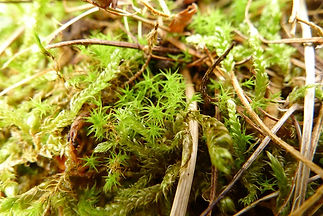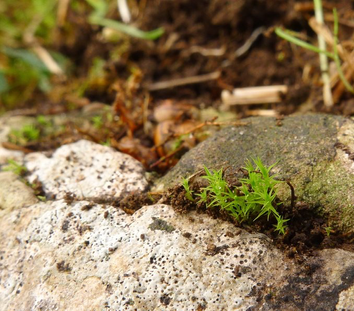Flies
43 species of fly have become extinct in England in the last 200 years, 10 of which are shown below

Species: Belida angelicae
Extinct: 1936

Species: Clitellaria ephippium
Extinct: 1850
© John Reinecke
© Hectonichus


RABBIT MOSS
Cheilothela chloropus

A rare moss which grows in short rabbit-grazed turf and exposed limestone.
-
Rarity: A handful of locations in Devon and Somerset
-
Cause of decline: Loss of traditional management, nutrient enrichment of soils.
As its name suggests Rabbit Moss can only survive in very tightly grazed grasslands, and it fortunes have been closely linked to the decline in rabbit numbers since the introduction of myxomatosis.
At Walton Common in Somerset, which is an inland site, this management has had to be done painstakingly by hand for the last few years, but this has resulted in an excellent response by the plants.
It is generally a coastal moss, and on the Torbay limestones its habitats are largely maintained by coastal winds and erosion; maintaining short sward grasslands. This combines with intermittent desiccation in hot summer months, allowing the moss to survive while surrounding grasses die back.
Rabbit Moss is a dull yellowish to brownish-green turf-forming acrocarpous moss, up to 10mm tall, with rigid, spiky leaves and a thickened beak on the capsule lid.
It is dioecious. Sporophytes are unknown in Britain and rare throughout its range, meaning it only reproduces asexually in the UK. It acts as a colonist and spreads locally via clonal reproduction
Predominately found in coastal habitats, on short, rabbit-grazed, herb-rich grassland, or on thin soils amongst rocks on south-facing limestone hills and sea-cliffs. It is also found on a dune slack in one location.
It is found in only two vice-counties (North Somerset and South Devon) and on the edge of its range in the UK. Frequent in the Mediterranean and along the Atlantic seaboard. It has also been recorded in North Africa, South Africa and Macaronesia.





